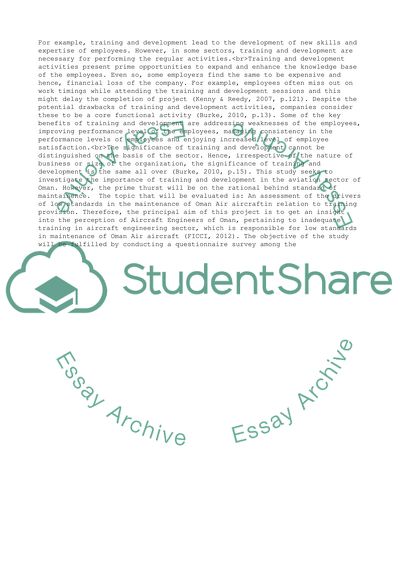Cite this document
(“Do Aircraft Engineer of Oman air believe Inadequate training in Research Proposal”, n.d.)
Do Aircraft Engineer of Oman air believe Inadequate training in Research Proposal. Retrieved from https://studentshare.org/management/1626925-do-aircraft-engineer-of-oman-air-believe-inadequate-training-in-aircraft-engineering-sector-of-oman-is-the-main-cause-of-low-standards-in-maintenance-of-oman-air-aircraft
Do Aircraft Engineer of Oman air believe Inadequate training in Research Proposal. Retrieved from https://studentshare.org/management/1626925-do-aircraft-engineer-of-oman-air-believe-inadequate-training-in-aircraft-engineering-sector-of-oman-is-the-main-cause-of-low-standards-in-maintenance-of-oman-air-aircraft
(Do Aircraft Engineer of Oman Air Believe Inadequate Training in Research Proposal)
Do Aircraft Engineer of Oman Air Believe Inadequate Training in Research Proposal. https://studentshare.org/management/1626925-do-aircraft-engineer-of-oman-air-believe-inadequate-training-in-aircraft-engineering-sector-of-oman-is-the-main-cause-of-low-standards-in-maintenance-of-oman-air-aircraft.
Do Aircraft Engineer of Oman Air Believe Inadequate Training in Research Proposal. https://studentshare.org/management/1626925-do-aircraft-engineer-of-oman-air-believe-inadequate-training-in-aircraft-engineering-sector-of-oman-is-the-main-cause-of-low-standards-in-maintenance-of-oman-air-aircraft.
“Do Aircraft Engineer of Oman Air Believe Inadequate Training in Research Proposal”, n.d. https://studentshare.org/management/1626925-do-aircraft-engineer-of-oman-air-believe-inadequate-training-in-aircraft-engineering-sector-of-oman-is-the-main-cause-of-low-standards-in-maintenance-of-oman-air-aircraft.


